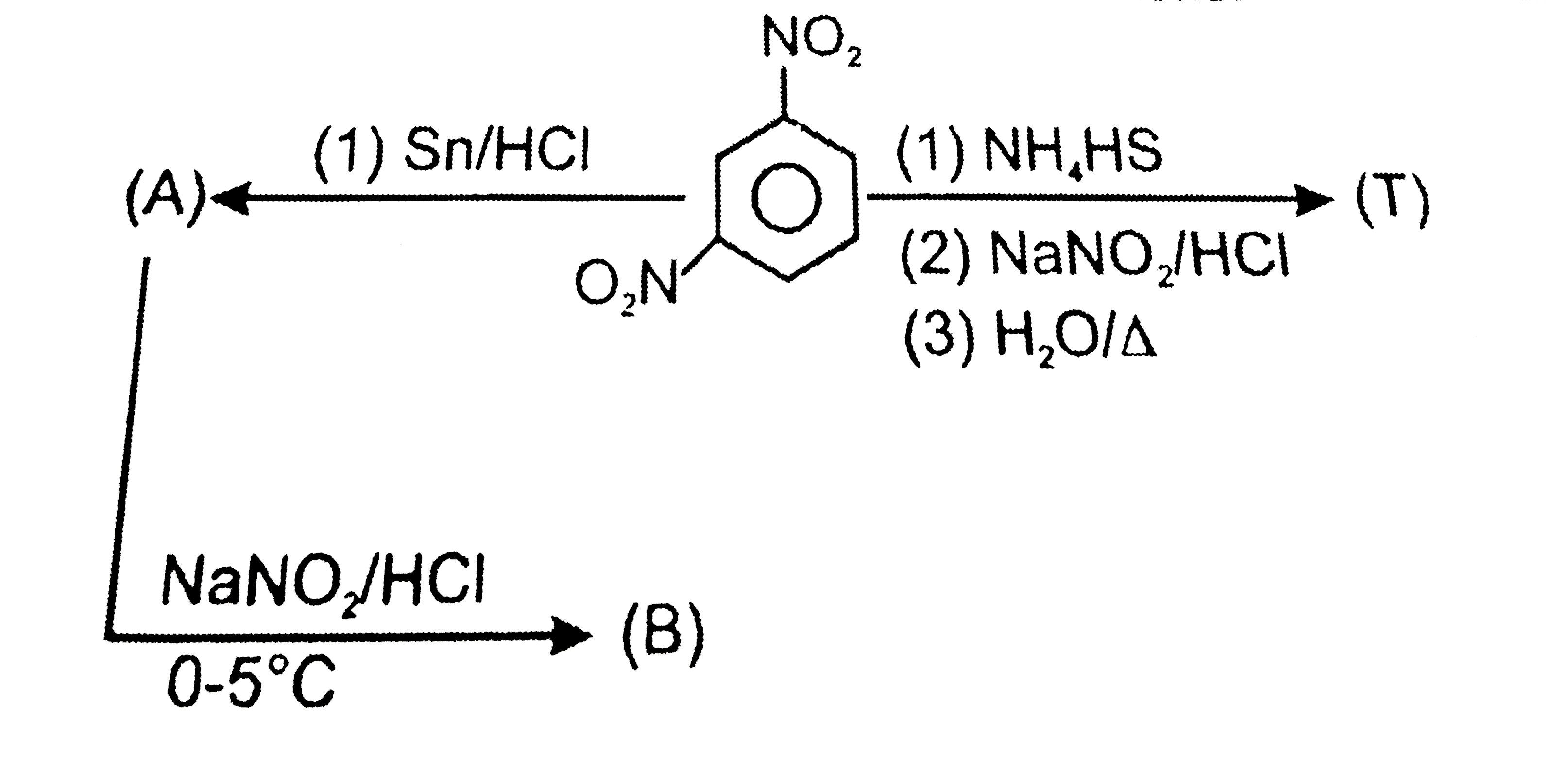In the chemical change aN2H4+bBrO−3→aN2+bBr−+6H2O, answer the following questions:
The element oxidised and reduced in the reaction are respectively:
N2H4,BrO−3
N,Br
H,Br
BrO−3,N2H4
The correct Answer is:B
To determine the elements oxidized and reduced in the reaction aN2H4+bBrO−3→aN2+bBr−+6H2O, we need to analyze the oxidation states of the elements involved in the reaction.
1. Identify the Reactants and Products:
The reactants are hydrazine (N2H4) and bromate ion (BrO−3). The products are nitrogen gas (N2), bromide ion (Br−), and water (H2O).
2. Determine the Oxidation States:
- For N2H4:
- The oxidation state of nitrogen in N2H4 can be calculated. Each hydrogen has an oxidation state of +1. Thus, for two nitrogen atoms:
2x+4(+1)=0⇒2x+4=0⇒2x=−4⇒x=−2
Therefore, the oxidation state of nitrogen in N2H4 is -2.
- For N2:
- In elemental nitrogen (N2), the oxidation state is 0.
- For BrO−3:
- The oxidation state of bromine can be calculated as follows. Let the oxidation state of Br be y:
y+3(−2)=−1⇒y−6=−1⇒y=+5
Therefore, the oxidation state of bromine in BrO−3 is +5.
- For Br−:
- The oxidation state of bromine in Br− is -1.
3. Identify Oxidation and Reduction:
- Oxidation: An increase in oxidation state. Here, nitrogen changes from -2 in N2H4 to 0 in N2. This is an increase in oxidation state, indicating that N2H4 is oxidized.
- Reduction: A decrease in oxidation state. Here, bromine changes from +5 in BrO−3 to -1 in Br−. This is a decrease in oxidation state, indicating that BrO−3 is reduced.
4. Conclusion:
- The element oxidized in the reaction is N2H4 (hydrazine).
- The element reduced in the reaction is BrO−3 (bromate ion).
Final Answer:
The element oxidized and reduced in the reaction are respectively: N2H4 and BrO−3.
---
The reactants are hydrazine (N2H4) and bromate ion (BrO−3). The products are nitrogen gas (N2), bromide ion (Br−), and water (H2O).
- For N2H4:
- The oxidation state of nitrogen in N2H4 can be calculated. Each hydrogen has an oxidation state of +1. Thus, for two nitrogen atoms:
2x+4(+1)=0⇒2x+4=0⇒2x=−4⇒x=−2
Therefore, the oxidation state of nitrogen in N2H4 is -2.
- In elemental nitrogen (N2), the oxidation state is 0.
- The oxidation state of bromine can be calculated as follows. Let the oxidation state of Br be y:
y+3(−2)=−1⇒y−6=−1⇒y=+5
Therefore, the oxidation state of bromine in BrO−3 is +5.
- The oxidation state of bromine in Br− is -1.
- Oxidation: An increase in oxidation state. Here, nitrogen changes from -2 in N2H4 to 0 in N2. This is an increase in oxidation state, indicating that N2H4 is oxidized.
- Reduction: A decrease in oxidation state. Here, bromine changes from +5 in BrO−3 to -1 in Br−. This is a decrease in oxidation state, indicating that BrO−3 is reduced.
- The element oxidized in the reaction is N2H4 (hydrazine).
- The element reduced in the reaction is BrO−3 (bromate ion).
The element oxidized and reduced in the reaction are respectively: N2H4 and BrO−3.
Similar Questions
Knowledge Check
In which of the following reactions H2O2 acts as a reducing agent ?
AH2O(l)+NH3(aq)⇔OH−(aq)+NH+4(aq)BH2O(l)+H2S(aq)⇔H3O+(aq)+HS−(aq)CH2O(l)+H2O(l)⇔H3O+(aq)+OH−(aq)DH+(aq)+OH−(aq)⇔H2O(l)Which of the following equations depict the oxidising nature of H2O2 ?
A2MnO−4+6H++5H2O2→2Mn2++8H2O+5O2B2Fe3++2H++H2O2→2Fe2++2H2O+O2C2I−+2H++H2O2→I2+2H2ODKIO4+H2O2→KIO3+H2O+O2
In which of the following reactions, H2O2 acts as a reducing agent ?
View SolutionIn which of the following reaction H2O2 acts as reducing agent :-
View SolutionIn which of the following reactions, H2O2 is acting as a reducing agent?
View SolutionThe products of the chemical reaction between Na2S2O3, Cl2 and H2O are
View SolutionWhich one of the following reactions represent the oxidising properly of H2O2?
View SolutionObserve the following reactions and answer the following questions

The product B on heating with H2O produces :
View Solution
